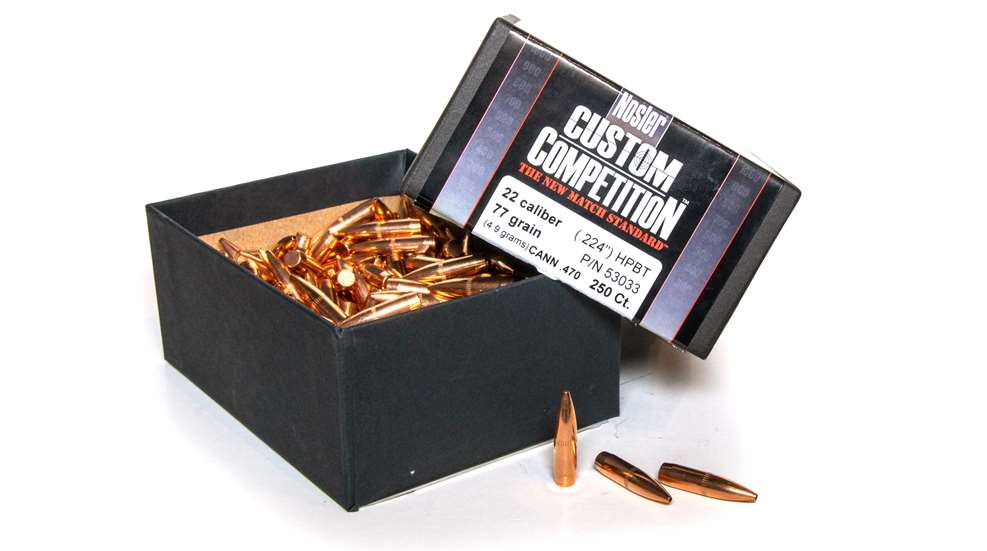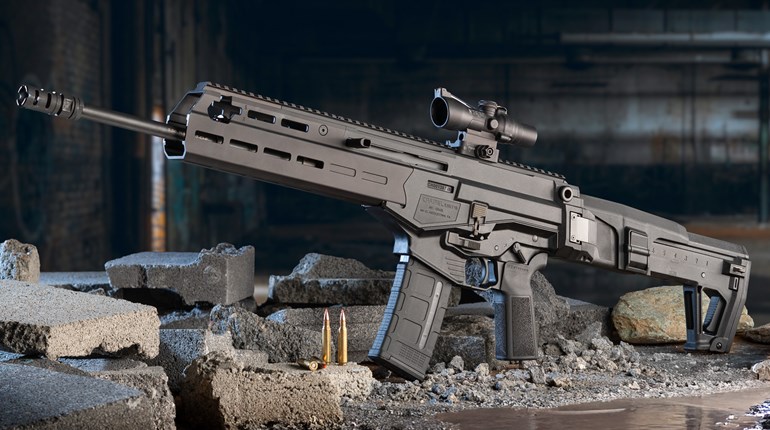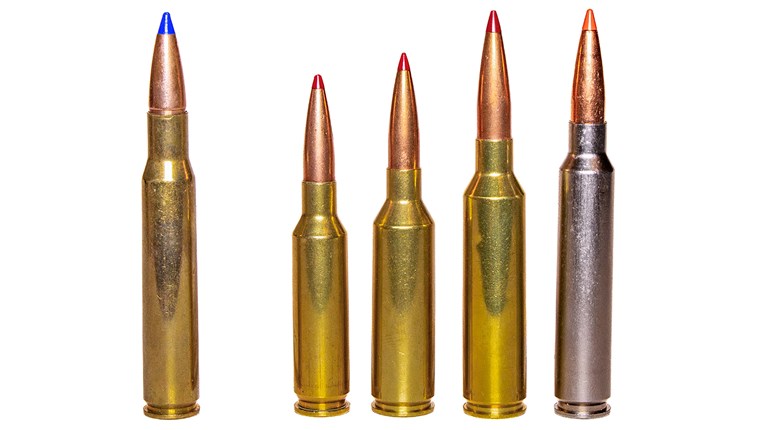
Because gun builders have allowed the .223 Rem. to evolve with the times, there are now faster twist rates that can handle more aerodynamic, flatter-shooting projectiles.
The rate of the rifling twist inside a rifle barrel would seem to be mostly a gun thing as opposed to an ammunition thing. However, for ammunition to shoot accurately, the bullet must be stabilized, and for a bullet to be stabilized, the rifling rate-of-twist must be compatible with the bullet’s length and velocity. This means that twist rate is very important to ammunition, and it is why the Sporting Arms and Ammunition Manufacturers’ Institute (SAAMI) establishes standards for twist rates as they relate to arms and ammunition.
This is a good thing. It’s why when you purchase ammunition for your firearm, you can expect that ammunition to shoot at least reasonably well. Most ammunition manufacturers make ammunition to SAAMI specifications, which means the bullets—at their launch velocity—will mesh well with the rifling-twist rate of the gun for which you bought them. It can, however, be a bad thing, as history has shown.
In 1955, Remington introduced the .244 Rem. cartridge. It fired a .244-caliber bullet and had a stipulated rifling-twist rate of one turn in 12 inches (1:12). The cartridge worked great with bullets in the 55- to 90-grain weight range. However, that same year Winchester introduced the .243 Win. (I’m betting Winchester had a spy inside Remington.) The .243 Win. also fired a .244-caliber bullet, but Winchester very wisely specified a 1:10-inch twist rate for the rifling. This meant Winchester’s 6 mm cartridge could handle heavier—longer—bullets of 100 grains. Both cartridges became popular, but the .243 Win. won the battle even though it was not quite as fast as the .244. Why? Twist rate. Eight years later Remington tried to save its .244 by reintroducing it as the 6 mm Rem. and tightening the twist rate from 1:12- to 1:9-inch. This allowed the cartridge to better compete with the .243 Win. But, it was too late.
Almost the exact same thing happened to Remington again in 2008. That’s the year Hornady introduced the 6.5 Creedmoor, which fired a .264-caliber bullet out of a cartridge case similar in size to the .260 Rem. Remington had introduced the .260 in 1997 and it had become a very popular cartridge for long-range target shooting and hunting. However, Remington stipulated a 1:9-inch twist rate for the .260, while Hornady stipulated a 1:8-inch twist for the Creedmoor. Because of the Creedmoor’s ability to handle longer, more aerodynamic bullets, Remington got twisted out of the conversation again.
While all this was going on, developments with what is now the most popular rifle cartridge in America were struggling through another twisted situation. In 1964, the .223 Rem.—yep, here we go with Remington yet again—was introduced. It was initially famous as the cartridge of the AR-15 and, in 5.56x45 mm form (which isn’t identical) as the cartridge of the military’s M16. The .223 Rem. had a specified twist rate of 1:12 inches, which was about perfect for a 55-grain bullet at 3,200 fps.
But, in the early 1980s, the 5.56 NATO cartridge was standardized. Externally, the cartridge-case dimensions of the .223 Rem. and the 5.56 NATO are identical, but the chambers are different, and the 5.56 NATO is loaded to higher pressures. Also, it is a military cartridge for which there are no SAAMI specifications. Initially standardized with a 62-grain bullet, 5.56 NATO rifles have a much faster 1:7-inch twist rate. This allowed the 5.56 NATO to stabilize longer bullets that were heavier and shot flatter. Aficionados of the .223 Rem. caught on and started re-barreling .223 Rem. rifles with faster-twist barrels and loading their own ammo to take advantage of newer and longer bullets.
However, most ammunition for the .223 Rem. is still built to work with the original 1:12-inch twist rate. Why? Well, there are many, many thousands of .223 Rem. rifles out there with a 1:12-inch twist. If you have one of those and purchased ammo loaded with a bullet that needs a 1:8-inch twist, you’ll struggle to hit a snuff can at 100 yards. But, some ammo makers are now offering .223 Rem. ammo that needs the faster twist.
Rifle manufacturers are doing the same. For example, Savage initially used the slower twist rate for the .223 Rem., but by 1995 all Savage 110 rifles in .223 Rem. had a 1:9-inch twist. In 2007, Savage added a 1:7-inch-twist-rate barrel to several models, but when it entered the AR-15 market in 2017, the company settled on the 1:8-inch twist for its MSRs in .223 Rem. or 5.56 NATO.
Of course, factory .223 ammo designed for a 1:12-inch twist will shoot just fine in the faster 1:8- or 1:7-inch twist barrels and in 5.56 NATO rifles. (Do not shoot 5.56 NATO ammo in rifles chambered for the .223 Rem.) This is one of the reasons many modern AR-15-style rifles are chambered for the 5.56 NATO instead of the .223 Rem., and it’s also why many manufacturers now load 5.56 NATO ammo and sell it commercially. Some manufacturers also cut .223-caliber chambers to the .223 Wylde chamber to allow for the firing of both .223 Rem. and 5.56 NATO ammunition—more accurately in the case of .223 Rem. and safely in the case of 5.56 NATO.
Cartridge designers have now finally learned and are specifying fast twist rates when new cartridges are introduced. Just look at the 22 Nosler, 224 Valkyrie, 6 mm ARC, .277 SIG Fury; the list goes on. Today, longer, more aerodynamic bullets pushed through fast-twist barrels shoot flatter and hit harder at distance.





































